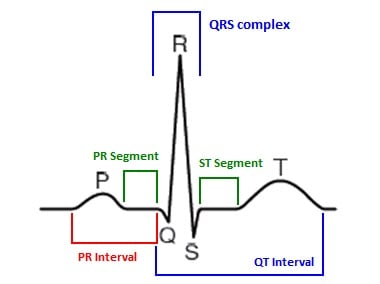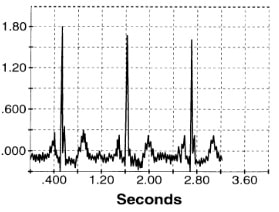In previous post, we cleared out that wavelet transform is used to analyze short-time and non-stationary signals. Since base wavelet function has to parameters – translation and scaling, it is possible to achieve good time and frequency localization. In other words, we can equally analyze the slow signal and fast signal structures without losing resolution and so evaluate signal frequency characteristics and time dynamics.
Heart signal analysis is one of the most common problems in biomedical engineering. Practically every part of ECG signal carries some sort of information about heart conditions, possible pathologies, and diseases. So equally, frequency and timing characteristics of ECG signal is essential. As you know standard ECG signal consists of several typical waveforms like P-QRS-T, where in P and T waves low frequency component dominates, and in QRS, mid and high.

The common condition of hear is myocardial ischemia when blood flow through coronary arteries to the heart is reduced, what prevents receiving enough oxygen. This can damage the heart muscle and lead to a heart attack. In order to notice this pathology it is we need to analyze S-T segment of ECG waveform. Insignificant changes in the signal can indicate ischemia. In order to find the variations in the signal, it is necessary to analyze signal up to 0,05Hz. Additionally QRS complex also carries some information. Due to ischemia, there appears slight arrhythmia which has to be detected.
Using standard methods it is tough to detect signal variations in QRS signal. Usually, they are interpreted as noise and artifacts. They are using wavelet analysis. There is a bigger chance to detect those variations related to the disease.
Using time-frequency analysis by applying wavelet transform, we can detect weak signals that are practically hidden in stronger waves. For instance, in case of Ventricular Late Potentials then, microvolt level signals appear that usually are not detectable.

By applying wavelet transform with carefully selected scale we can extract late ventricular potentials.

As you can see, with scale S=1/16, an anomaly has been detected on second QRS.
Wavelet transform is an effective way of detecting and filtering signals when the exact shape is unknown. If you used Fourier transform, you would want that expected signal spectrum clearly distinguished from noise.

